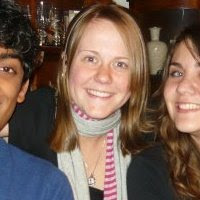10 (pp. 344-349)
Socialization- learn
role orientation
Institutionalized v individualized role orientation
act the same v be creative is OK
- Collective v. individual tactics - group learning v individual one on one teaching
- formal v informal
- sequential v random - do this until 1 month then do this v do what you want
- fixed v variable tactics- precise v flexible(dont tell them exactly when they need to be socialized )
- serial v disjunctive- taught by emily for ie v learn on own
- Divesture v investiture - auto negative treatment v auto positive
17 (pp. 566-583)
2 columns>>>>>
Organizational Culture and ethical behavior
OC- shared norms/values
Organizational values
17 (pp. 583-588)
Organizational Culture and ethical behavior
OC- shared norms/values
Organizational values
- terminal values- desired end state/outcome
- instrumental value - desired behavior
employees learn org values and norms through
- org rites and ceremonies
- formal socialization
- org language (how people speak and dress and act)
- signs, symbols, stories- rites of passage(retirement party), integration(office parties), enhancement(award dinners)
Where Culture of O comes from
- O's ethics- societal, professional, individual
- characteristics of people in O- asa
- nature of employment- ESOP - employee stock ownership - work harder bc see more of return- have equity in O
- design of org structure (mechanistic [tall, centralized, standard] v organic [flat, decentral]) (adaptive [FTW to motivate] v inert (fail to motivate w/ values)
strong, adaptive companies have
- bias for action :encourage creative
- nature of O's mission : stick to business you know, have close relations w/ C
- how it operates: motivate emps, balance in centralization.
Values from national culture
Hofstede's model of NC
- Individualism V collectivism[harmony, cohesive] : relationship bw individuals and groups.
- Lo[reduce inequity through taxation, prevent gap bw rich and poo] v Hi[big gap, accept differences as natural, inequities in $ and class etc] Power Distance
- Achievement [value success, assertiveness]V nurturing[value quality of life] orientation
- Lo[value diversity] v Hi Uncertainty avoidance
- LT v ST--- concentrate on Long or short term? we like now.
- bolded terms are which side of the model US sides on.
differences in culture while trying to work together can be difficult and frustrating (mexico example w/ long lunches late hours v american schedule and norms.)
MGMT Models of Japanese Management
draw>>
>


No comments:
Post a Comment